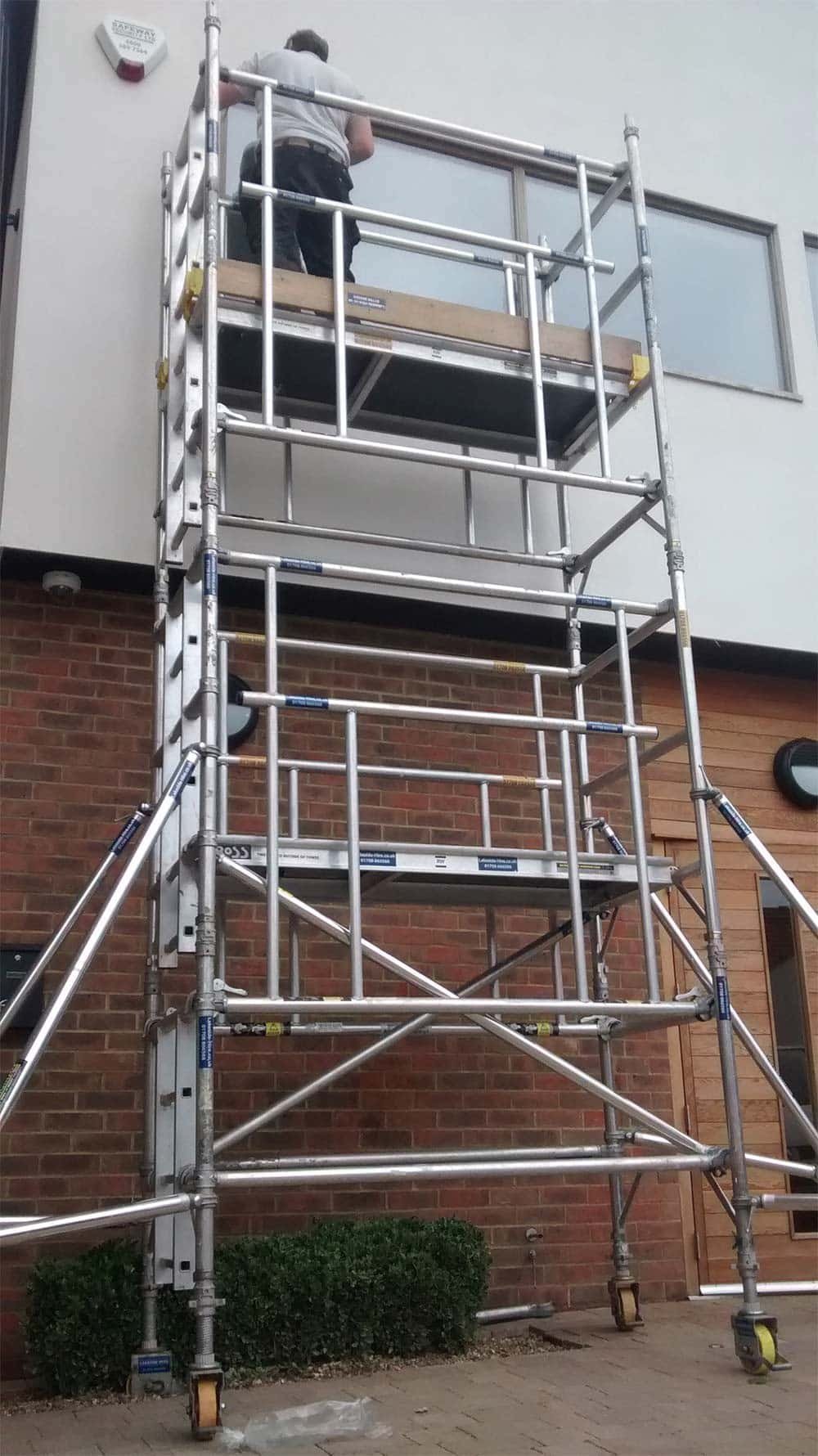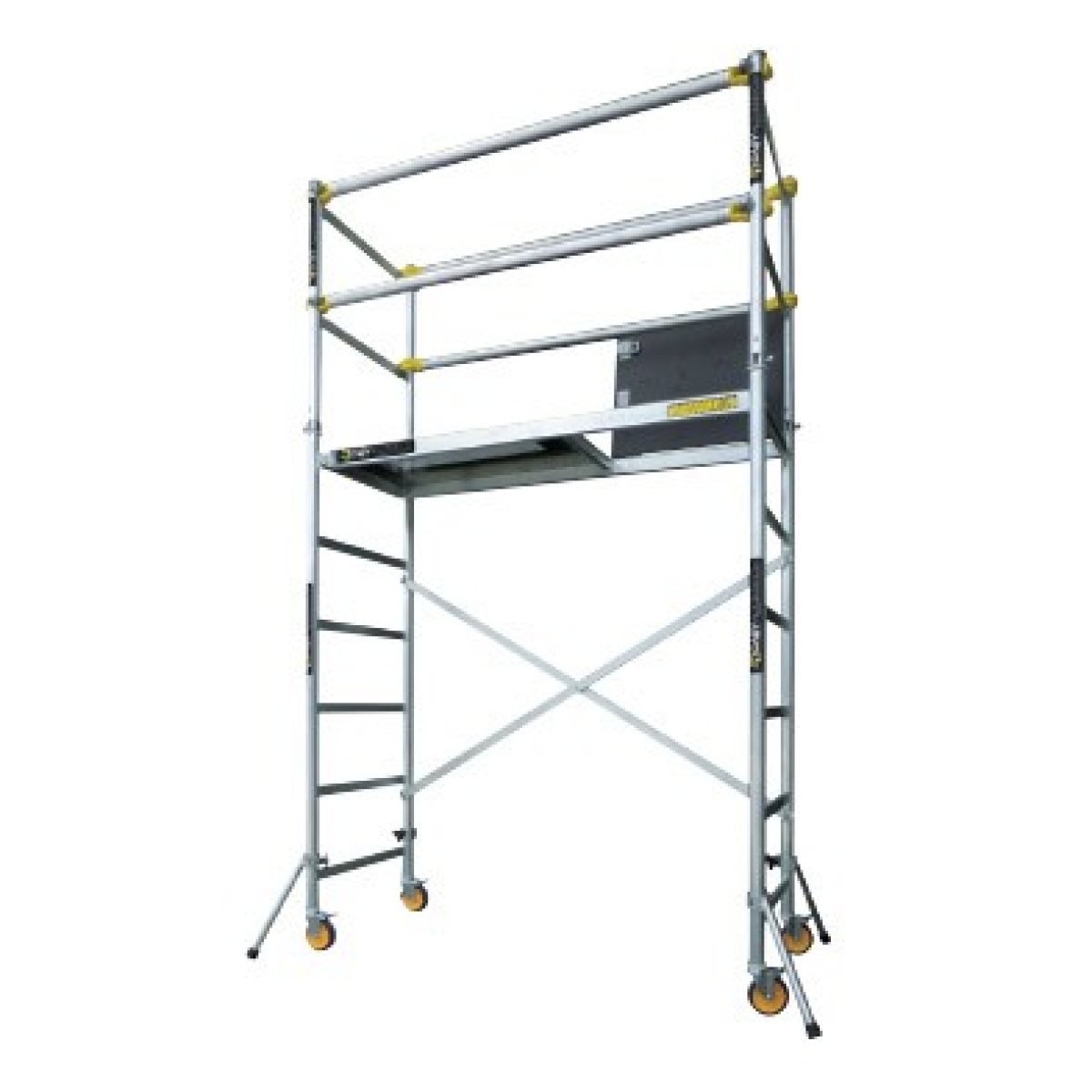Scaffolding for every single Demand: Commercial, Residential, and Industrial

Just how to Select the Right Scaffolding for Your Construction Job
Select scaffolding based on project requirements: steel for stamina, light weight aluminum for agility. Consider height, complexity, and movement options. Customize design for safety and efficiency. Prioritize lots capacity adherence. Confirm governing compliance and safety and security features. Contrast costs for budget placement. Keep and examine consistently for long life. Comprehensive guidelines supply comprehensive details to make an educated decision.
Types of Scaffolding
When considering kinds of scaffolding for building and construction jobs, it is important to understand the different alternatives offered to ensure security and performance on site.
One crucial facet to contemplate is worldly flexibility, as various sorts of scaffolding are suitable for different task needs. Steel scaffolding, as an example, offers resilience and stamina, making it optimal for heavy construction job, while aluminum scaffolding is lightweight and corrosion-resistant, permitting very easy transport and arrangement. Elevation restrictions are also a crucial variable to bear in mind when picking scaffolding, with options like put on hold scaffolding being better for work at great elevations.
In addition to product considerations, the assembly complexity of scaffolding systems can affect job timelines and labor prices. Equipments like modular scaffolding deal convenience of setting up and disassembly, raising performance on site. Mobility options need to likewise be thought about, with choices like mobile scaffolding giving versatility for projects that require regular relocation of the framework.
Considerations for Project Requirements
Mindful examination of task needs is important for selecting one of the most appropriate scaffolding type for building ventures. When appraising project demands, customized layout plays a critical role. Not all building and construction jobs are the same, and having actually scaffolding tailored to the particular needs of the job can greatly boost effectiveness and safety. Elements such as the format of the site, the height and shape of the framework being serviced, and any unique obstacles provided by the atmosphere should all be thought about when taking into consideration a custom layout.
One more essential consideration is the lots ability of the scaffolding. Understanding the weight that the scaffolding will certainly require to support is important for guaranteeing the security of employees and the integrity of the framework. Surpassing the tons capacity of scaffolding can bring about mishaps and architectural failings, highlighting the value of accurately examining this aspect of job demands. By meticulously appraising custom-made design needs and tons capacity demands, building and construction teams can select the ideal scaffolding to sustain their task efficiently.
Safety Requirements and Regulations
Taking into consideration security requirements and regulations is crucial when selecting scaffolding for construction jobs. Ensuring regulatory compliance and including necessary safety and security attributes can assist avoid mishaps and develop a safe workplace. Below are some bottom lines to bear in mind:

- Check Regulative Conformity: Before going with a scaffolding system, confirm that it satisfies all appropriate safety requirements and guidelines stated by authorities such as OSHA (Occupational Security and Health And Wellness Management) or the local building and construction governing bodies.
- Examine Safety Qualities: Look for scaffolding alternatives that come equipped with crucial security features such as guardrails, toeboards, and non-slip surface areas to lessen the risk of drops and injuries on the building and construction site. scaffolding
- Inspect Lots Capability: Make sure that the scaffolding you select has the suitable lots ability to support the workers, devices, and products that will be positioned on it during the building and construction procedure.
- Training Requirements: Think about the training needed to securely set up, make use of, and dismantle the selected scaffolding system, and make certain that your team is adequately educated to deal with it according to safety and security guidelines.
Price and Budget Plan Analysis
Performing a complete expense and budget plan analysis is necessary when identifying the financial usefulness of choosing scaffolding for building projects. Expense comparison plays a crucial role in this evaluation, as it allows job supervisors to examine different scaffolding alternatives based upon their upfront and long-term costs. By contrasting the expenses of buying or renting various kinds of scaffolding systems, building groups can make educated choices that line up with their spending plan restraints. Furthermore, financial preparation should involve anticipating the overall costs related to scaffolding, consisting of installment, taking down, transport, and maintenance costs.
To see to it that the selected scaffolding solution is not only economical yet also lasting, job managers have to consider the overall budget designated for the construction project. This entails reviewing just how much of the spending plan can be committed to scaffolding without endangering the quality and security of the framework. By integrating cost analysis with detailed monetary planning, construction groups can enhance their expenses and make calculated selections that support the effective conclusion of the task within budget plan restraints.
Maintenance and Evaluation Guidelines
Effective upkeep and evaluation standards are vital for ensuring the safety and security and durability of scaffolding used in building projects. Normal assessment treatments aid identify any kind of potential problems prior to they rise, while adhering to maintenance routines makes sure that the scaffolding stays in leading condition throughout the job.
Below are four bottom lines to contemplate when establishing upkeep and examination guidelines:
- Routine Examinations: Conduct complete inspections before and after each use to look for any damage or deterioration.
- Documentation: Keep comprehensive records of all inspections and upkeep tasks to track the scaffolding's problem in time.
- Training: Guarantee that employees in charge of evaluations are effectively trained to recognize possible threats and take appropriate action.
- Adherence to Criteria: Comply with market finest practices and regulatory needs when establishing evaluation and upkeep procedures to assure compliance and security.
Often Asked Questions
Can Scaffolding Be Custom-made to Fit Certain Task Requirements or Arrangements?
Personalization choices for scaffolding can cater to certain project needs and arrangements. Focusing on safety factors to consider is crucial when adjusting scaffolding to unique demands. Recognizing lots capacities, system measurements, and accessibility factors assures a secure and tailored solution.
Exist Any Environmental Factors That Could Impact the Option of Scaffolding for a Construction Job?
When choosing scaffolding for construction projects, it is necessary to take into account environmental factors such as the influence of climate. Sustainability considerations additionally play a significant duty in selecting the best scaffolding to assure green practices.
Just how Should Scaffolding Be Taken Down and Kept After the Job Is Completed?

Correct dismantling and effective storage space of scaffolding after project completion are essential for safety and security and cost-effectiveness. Comply with producer standards, tag parts for very easy reassembly, check for damage, clean before storage space, and safeguard in a completely dry, ventilated area.
What Are Some Common Errors to Prevent When Making Use Of Scaffolding on a Construction Site?
Safety safety measures and training are crucial to avoid typical mistakes when using scaffolding. Proper setting up and evaluation must be carried out to guarantee stability. Overlooking these steps can lead to crashes, injuries, and delays in building and construction jobs.
Exist Any Additional Training or Qualification Needs for Employees Making Use Of Scaffolding on a Building And Construction Job?
Worker safety and security is vital in building jobs entailing scaffolding. Adequate training is important to assure workers recognize exactly how to safely put up, make use of, and take apart scaffolding. Accreditation needs vary by jurisdiction, with guidelines in position to maintain safety and security requirements.
Final thought
To summarize, picking the ideal scaffolding system for a building job needs thorough analysis of various aspects such as project needs, security standards, budget restraints, and maintenance protocols.
By taking these facets right into account faithfully, task supervisors can assure the safety of workers, satisfy regulatory needs, and enhance project effectiveness.

It is crucial to prioritize these factors to consider to safeguard the effective conclusion of building and construction projects.
